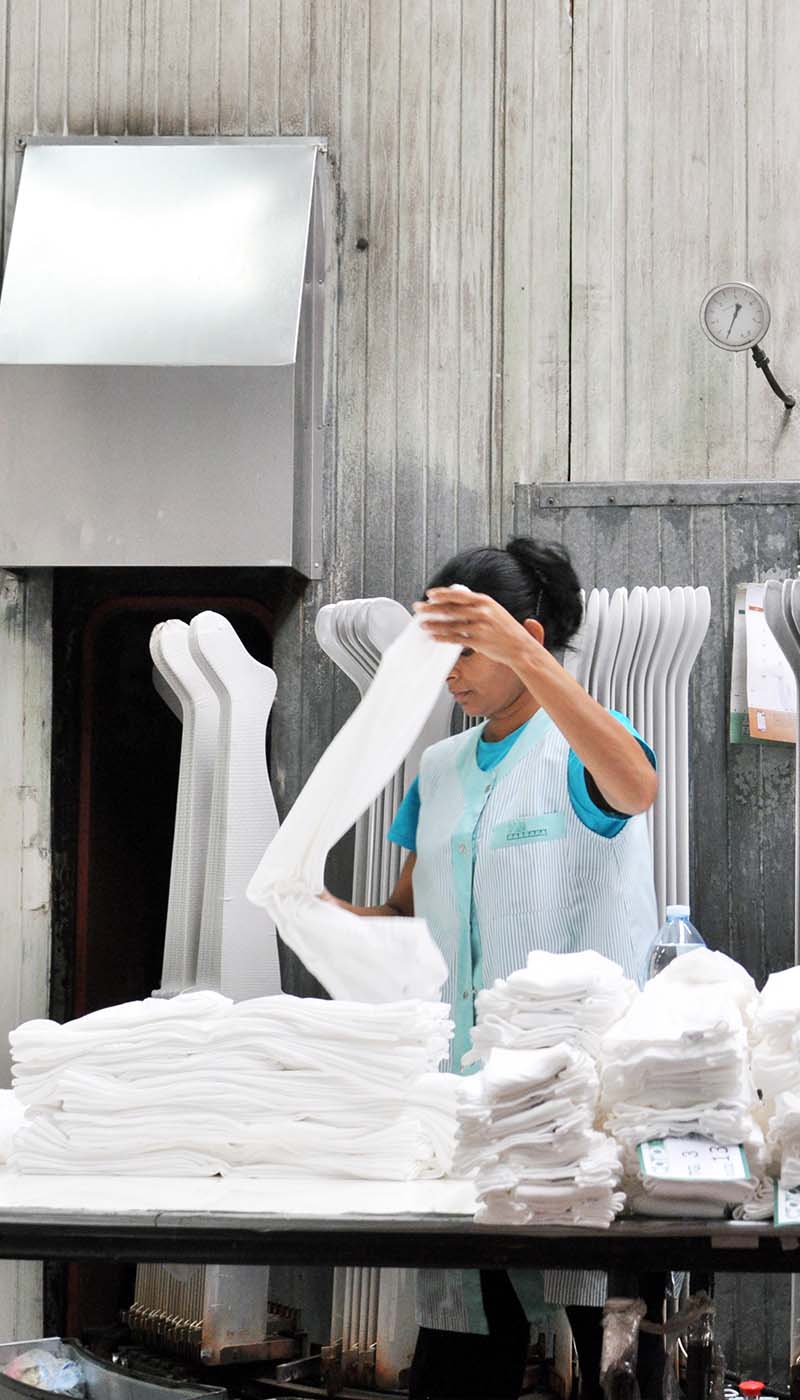Production Process
The production process of our stockings contains several steps to transform raw materials to a finalised product. In some cases, all steps are performed in-house, but sometimes the products have to be sent between different factories.
1. Our production facility orders the raw material needed from a certified yarn producer.
2. The production facility knits the material into a full product.
3. The production facility sends the products to a dyeing facility or uses one in-house.
4. The dyeing facility sends the products to the packing facility.
5. The packing facility sends the products back to the production facility.
6. The main production facility distributes the packed products to our warehouse in Sweden.
7. The products arrive at our warehouse in Köping, Sweden.
Supply Chain
The production supply chain is divided into four different tiers. The different tiers are according to industry standard and they facilitating the mapping and reporting of our impact.
During 2023 we have implemented a system where we can measure and identify areas of impact, BCome (mentioned in the section about Traceability).
Tier 4. Raw Material Extraction
Extraction of raw material
Tier 3. Raw Material Processing
Processing of raw materials into yarns
Tier 2. Material Production
Production and finishing of materials
Tier 1. Finished Production Assembly
Manufacturing of final product
Our Production Partners
Our products are knitted in Italy, not only because the Italians have been producing high quality hosiery for a long time, but also because the factories we work with have extremely high ethical, social and environmental standards.
Our factories use energy from renewable resources, such as wind or solar. Most of them have their own solar panels, and produce between 35-80% of their own energy.
We have published a list of our factories with their location and certificates.


In the knitting stage, the yarn is considered “raw” since it's not dyed yet. The dyeing facilities are located next to the knitting facilities, and the dyes used are vegan and OEKO-TEX certified.
The dyeing facilities are able to consume 20% less energy than a conventional process, and the equipment runs on a combination of natural gas and solar energy. They are also able to re-use 50% of the water in the dyeing process, and the remaining 50% is purified.
Our suppliers must provide certificates to verify that materials and production meet the standards required by us. Our website displays certifications for materials used in our basic styles, moving forward, we are committed to expanding this practice to include certifications for all our styles.



